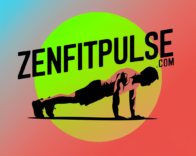
Did you know that a well-structured workout routine relies heavily on understanding how different muscle groups collaborate to achieve optimal strength and fitness? When you exercise, multiple muscles are engaged simultaneously, making it crucial to identify which ones work together to maximize your training efficiency.
A complete training program should include a combination of exercises that improve your strength, flexibility, endurance, and balance. By understanding how muscle groups function together, you can create a more effective workout plan that optimizes recovery and prevents muscle imbalances.
Key Takeaways
- Understanding muscle groups and their synergy is crucial for effective workout routines.
- Strategic muscle group training enhances workout efficiency and optimizes recovery.
- Proper muscle group pairing maximizes results for strength, hypertrophy, or general fitness.
- A well-structured training program should include exercises that improve overall body health.
- Understanding muscle group synergy benefits both beginners and advanced lifters.
Understanding Muscle Groups and Their Functions
The human body is made up of numerous muscle groups that work together to facilitate movement. Understanding these muscle groups and their functions is essential for designing an effective workout routine.
Types of Muscles in the Human Body
The human body contains three main types of muscles: skeletal, smooth, and cardiac. Skeletal muscles are the ones we can control voluntarily and are responsible for movement. They are further divided into different muscle groups that work together to perform various exercises.
Major Muscle Groups for Strength Training
Major muscle groups include the chest, back, legs, and shoulders. These muscles are responsible for performing compound exercises like squats, deadlifts, and bench presses. Training these muscle groups is crucial for overall strength and muscle development.
Secondary and Accessory Muscle Groups
Secondary and accessory muscle groups support the primary muscles during exercises. For example, during a squat, the quadriceps are the primary muscles, while the hamstrings and glutes act as secondary muscles. Understanding the role of these secondary muscles is vital for creating a balanced workout routine.
| Muscle Group | Primary Function | Secondary Function |
|---|---|---|
| Chest | Pushing movements | Stabilizing the shoulder |
| Back | Pulling movements | Stabilizing the spine |
| Legs | Lower body movements | Supporting body weight |
By understanding the different muscle groups and their functions, you can create a more effective workout routine that targets all the necessary muscles, leading to better overall fitness and muscle development.
The Science Behind Muscle Synergy

The science behind muscle synergy reveals the intricate relationships between different muscle groups that work together to facilitate various movements and exercises.
Compound vs. Isolation Exercises
Compound exercises, such as squats and deadlifts, engage multiple muscle groups simultaneously, whereas isolation exercises, like bicep curls, target specific muscles. Understanding the difference is crucial for designing an effective workout routine.
For instance, during a bicep curl, several muscles help your body flex at the elbow, including the brachialis and brachioradialis. This illustrates how even seemingly isolated movement involves multiple muscles working together.
How Muscles Support Each Other During Movement
During any movement, muscles work in synergistic relationships, with some acting as prime movers, others as synergists, and others as stabilizers. For example, during a bicep curl, stabilizer muscles in the shoulders and core help efficiently lift the weight.
| Muscle Group | Primary Function | Example Exercise |
|---|---|---|
| Biceps | Elbow Flexion | Bicep Curl |
| Shoulders | Stabilization | Lateral Raise |
| Core | Stabilization | Plank |
What Muscle Groups Work Together Naturally

When it comes to strength training, certain muscle groups naturally collaborate to produce powerful movements. Understanding these collaborations is key to designing effective workouts.
Push Muscles: Chest, Shoulders, and Triceps
The push muscle group, comprising the chest, shoulders, and triceps, works together during exercises like the bench press and push-ups. The chest muscles (pectoralis major) are the primary movers, while the shoulders (deltoids) assist in controlling the movement. The triceps help extend the elbow, completing the push motion.
Pull Muscles: Back and Biceps
The pull muscle group involves the back and biceps. During rows and pull-ups, the back muscles (latissimus dorsi, trapezius, and rhomboids) work together to pull the weight towards the body. The biceps assist by flexing the elbow.
Lower Body Connections: Quads, Hamstrings, and Glutes
The lower body muscles, including the quadriceps (quads), hamstrings, and glutes, work in synergy during exercises like squats and deadlifts. The quads are responsible for knee extension, while the hamstrings and glutes control hip extension and knee flexion. This synergy is crucial for powerful lower body movements.
| Exercise | Primary Muscles | Secondary Muscles |
|---|---|---|
| Squats | Quads, Glutes | Hamstrings, Lower Back |
| Deadlifts | Hamstrings, Glutes | Quads, Lower Back, Traps |
| Lunges | Quads, Glutes | Hamstrings, Core |
Benefits of Strategic Muscle Group Training

By focusing on strategic muscle group training, individuals can achieve a more balanced and efficient workout regimen. This approach allows for a comprehensive understanding of how different muscle groups work together, enhancing overall fitness and strength.
Maximizing Workout Efficiency
Training multiple muscle groups at once can significantly reduce the overall time spent in the gym. By doing so, you can achieve more in less time, making your workout routine more efficient and effective.
Optimizing Recovery Between Sessions
A well-structured training plan that considers muscle group synergy can also improve recovery. By balancing the development of opposing muscle groups, such as the chest and back, you can enhance overall body recovery and reduce the risk of injury.
Preventing Muscle Imbalances
Strategic muscle group training helps prevent muscle imbalances by ensuring all groups receive appropriate attention. This balanced development is crucial for maintaining proper posture, joint health, and overall strength
Popular Workout Splits for Different Goals
A well-structured workout split is the backbone of a successful fitness regimen. Different workout splits cater to various fitness goals and levels of experience. Understanding these splits can help you tailor your routine for optimal results.
Full-Body Workouts: Pros and Cons
Full-body workouts involve training all major muscle groups in a single session. This approach is efficient for those with limited time or who are just starting out. The pros include increased caloric burn and improved overall muscle balance. However, it may not be ideal for advanced lifters seeking to maximize muscle growth in specific areas.
Upper/Lower Splits: Balancing Intensity and Recovery
Upper/lower splits divide your workout into upper body and lower body days. This allows for a balance between intensity and recovery, as you’re not overloading on a single day. It’s a versatile split that can be adjusted based on your training frequency and goals.
Push/Pull/Legs: The Bodybuilder’s Approach
The push/pull/legs split is a popular choice among bodybuilders. It involves dedicating separate days to pushing muscles (chest, shoulders, triceps), pulling muscles (back, biceps), and legs. This approach allows for significant volume and variety for each muscle group, making it ideal for those focused on hypertrophy. As noted by fitness experts, “this split allows you more time with each muscle group, and allows you to go hard on accessory motions.” It requires a higher training frequency, typically 5-6 days per week, making it more suitable for intermediate to advanced lifters.
Creating Your Optimal Muscle Group Combinations
Understanding how to pair muscle groups effectively is key to a successful workout regimen. When designing your workout split, several factors come into play.
Factors to Consider: Goals, Time, and Experience Level
When creating your workout split, consider your fitness goals, available training time, and experience level. These factors will help determine the most effective muscle groups to train together.
Beginner-Friendly Muscle Group Pairings
For beginners, pairing push muscles (chest, shoulders, triceps) and pull muscles (back, biceps) is a great starting point. This combination allows for a balanced workout and adequate recovery time.
Advanced Training Splits for Muscle Growth
Advanced lifters can benefit from more specialized training splits. For example, a 4-day split could include: Day 1: Chest, shoulders, triceps, forearms; Day 2: calves, hamstrings, quadriceps, glutes; Day 3: biceps, back, abdominals, traps, lats; Day 4: rest. This allows for greater focus on specific muscle groups.
| Day | Muscle Groups |
|---|---|
| 1 | Chest, Shoulders, Triceps, Forearms |
| 2 | Calves, Hamstrings, Quadriceps, Glutes |
| 3 | Biceps, Back, Abdominals, Traps, Lats |
Sample Workout Routines Based on Muscle Group Synergy

Sample workout routines can help you apply the concept of muscle group synergy to your training. By organizing your workout around muscle group combinations, you can achieve a more efficient and effective workout split.
2-Day Full Body Split for Beginners
A 2-day full body split is ideal for beginners, as it allows for a balanced workout without excessive frequency. This routine typically includes exercises like squats, deadlifts, bench press, and rows, targeting major muscle groups.
4-Day Upper/Lower Split for Intermediate Lifters
An upper/lower split is suitable for intermediate lifters, allowing for more focused training on specific muscle groups. This routine involves dividing your workout into upper body and lower body days.
6-Day Push/Pull/Legs for Advanced Training
The push/pull/legs workout split is a more advanced routine that targets specific muscle groups. As described, this routine involves dedicating one day to pushing muscles (chest, shoulders, triceps), one day to pulling muscles (back, biceps), and one day to legs (quads, hamstrings, glutes). A sample routine could be:
- PUSH DAY: bench press, overhead press, tricep pushdown
- PULL DAY: row, lat pulldown, hammer curl
- LEG DAY: barbell deadlift, goblet squat, leg extensions, walking lunges
This split allows for significanttrainingvolume and frequency while managing recovery.
Recovery Considerations When Training Multiple Muscle Groups
As you intensify your workout by targeting multiple muscle groups, the importance of recovery cannot be overstated. When you’re really challenging yourself, fatigue can set in quickly, impacting your ability to perform at your best in subsequent exercises. This not only affects your strength and muscle gains but also necessitates substantial rest and recovery time between workouts.
Optimal Rest Periods Between Training Sessions
Allowing adequate time for recovery between training sessions is crucial. For most individuals, this means taking at least a day or two off between intense workouts that target multiple muscle groups. Adequate rest is essential for muscle repair and growth.
Nutrition Strategies for Multi-Muscle Group Training
Nutrition plays a vital role in recovery. Ensuring you’re consuming a balanced diet that includes sufficient protein, complex carbohydrates, and healthy fats can support muscle recovery. Adequate hydration is also crucial.
| Nutrient | Role in Recovery | Food Sources |
|---|---|---|
| Protein | Muscle Repair | Lean meats, fish, eggs, dairy |
| Complex Carbohydrates | Energy Replenishment | Whole grains, fruits, vegetables |
| Healthy Fats | Hormone Regulation | Nuts, seeds, avocados |
Signs You Need More Recovery Time
It’s essential to listen to your body and recognize signs that indicate you need more recovery time. These signs include persistent soreness, decreased performance, and motivation loss. If you experience these symptoms, consider adjusting your training schedule to prioritize recovery.
Conclusion: Implementing Muscle Group Training in Your Fitness Journey
As we conclude our exploration of muscle group training, it’s clear that understanding how different muscles work together is crucial for achieving your fitness goals. By now, you’ve learned how to structure your workout routine to maximize efficiency and results.
To implement these principles effectively, start by identifying your training goals and creating a personalized plan that suits your needs. Whether you’re a beginner or an advanced lifter, understanding muscle synergy will help you make the most out of your workouts.
Remember, the key to strength training success lies in consistency and patience. Be prepared to experiment and adjust your approach as needed to achieve optimal results. By doing so, you’ll be able to create a balanced fitness plan that enhances your overall body strength and fitness.
In conclusion, applying the principles of muscle group training will significantly enhance your fitness journey. Stay committed, listen to your body, and enjoy the process of achieving your goals.

